Concrete Countertops have been around for a long time. Just not like this. This isn’t just some concrete mix you buy in a bag at the hardware store. Each ingredient has been carefully selected for the benefits it imparts to the end product, which is a countertop surface that is quite dense, and ready for anything your kitchen can throw at it.
[su_spacer size=”40″]
Concrete Countertop Gallery
[su_spacer size=”40″]
We’ve made countertops for clients in Tampa, St Petersburg, Sarasota, and Anna Maria Island and as far south as Palm Beach, Fort Lauderdale, Key Largo and even the Cayman Islands. We’ve been asked All the Questions, and here we’ll set out to answer them for you. You’ll learn:
- The Importance of a Good Concrete Mix
- The difference between Cast-In-Place and PreCast
- What colors are available for concrete countertops
- What’s the longest you can make a concrete countertop?
- Answers to Frequently Asked Questions
Concrete isn’t as exotic as most people think. As a countertop material it has come a long way. However, most DIY Concrete Countertop blog writers and Houzz.com articles simply recycle old information, which gives concrete a bad name as a countertop material.
This misinformation simply isn’t the complete picture anymore. Still, Concrete Countertops aren’t for everyone. I have lived with concrete countertops, furniture and sinks in my home for the last 7 years. I believe the best way to experience what to expect is for me personally to live with it daily and let my kids wreck things as only kids can. This helps me to understand how best to handle situations should they occur.
To date, I haven’t had any stains on any of the concrete in my home, in spite of two children doing their best work to the contrary. All that said, let’s dive into the many forms that concrete takes on as a countertop material.
[su_spacer size=”40″]
It’s All in the Concrete Mix
“What’s so special about the concrete mix you make? Don’t you just buy a bag of concrete from the hardware store and add water?” you may be wondering.
Please! The concrete we use is completely different than the bagged mixes you can pick up at the home cheap-o. Each ingredient in our mix designs is specifically chosen to make our concrete a dense matrix that will continue to improve, harden and last a very long time. We use recycled industrial by-products to lessen the impact our concrete countertops make on the environment. Ultra fine aggregate creates a high surface area in the slab which leads to denser, more stain resistance from the start with the end goal being a countertop that grows so dense, there is no need for sealers.
If you care for more specifics, traditional bagged mix concrete from the box stores yield a fully cured final product between 3,000-5,000 psi. It’s important to note that ‘fully cured’ usually means 28 days. My concrete reaches 5,000 psi in 24 hours, with an ultimate compressive strength in excess of 9,000psi.
Sometimes we use a mix called ECC (Engineered Cementitious Composite) which can yield compressive strengths in excess of 12,000psi. Strong stuff.
Why is this important? Polishing, grinding and processing in general isn’t possible until concrete reaches 3,000 psi. If you try to do any of these things before the concrete has reached 3,000 psi, the cement hasn’t developed enough to hold the aggregates in, which will make them pop out of the surface leaving big holes.
[su_spacer size=”40″]
Cast-in-Place VS. Precast
If you’ve read any DIY Concrete Countertop blogs, you’ve probably noticed a recurring theme: the countertops never turn out how the writer/DIY’er expected.
There’s a simple explanation for this:
- The pictures you see of professional concrete countertops are (mostly) made in a shop (Precast) and
- DIY bloggers make a huge mess in their kitchen (Cast-in-Place).
When you cast concrete in your kitchen, the finish you get will depend on how nicely you level out and finish the top with a steel trowel. This style of finish usually has a LOT of variation in it from the pressure and movement of the trowel. I know a bunch of pro concrete countertop makers who won’t even try a trowel finish because it never looks exactly like the sample.
When you precast concrete, you’ve prepared forms that are upside down, so that the finished top is actually on the bottom while you are pouring. This results in a nicely compacted surface, with a smooth even finish after the concrete has hardened and been flipped over. Precast countertops can then be processed in a bunch of different ways depending on the look you’re after.
Another note of interest here is that concrete will imitate whatever surface you cast on. For example, if you cast on Glass, the concrete will be super shiny and glass smooth. If you were to cast on wood, the concrete would give you all the grain patterns and texture of the wood.
When you cast in your kitchen, you better be certain that’s the look you’re after, because it will be incredibly hard to remove those countertops without destroying your cabinetry, sink and backsplash along with it.
We choose to cast everything, be it trowel finish or polished, in our shop for this very reason. There are very few instances where we will sign up for a cast in place job and you should be hesitant as well.
If your heart is set on it, you can still make a trowel finished project by building your forms off of your cabinets and moving them into place once they are cured.
[su_spacer size=”40″]
What Colors are Available for Concrete Countertops?
[su_spacer size=”40″]
White Concrete Countertops
From Residential Kitchens to Commercial Concrete Sinks, we have made dozens of projects featuring our natural white concrete countertops (Photo Gallery). Our concrete mix starts out using White Portland Cement to achieve vibrant and consistent colors. So for these countertops, we add no pigment at all.
The end result is a really sexy off-white color with little flecks of our quartz sand aggregate. I’ve said it before, white concrete is my personal favorite.
From this natural white Portland cement base, we can get amazing colors using pigments. One of my favorite examples of a brilliantly colored concrete countertop is a bar we did for a local brewery. It was a gorgeous blue that matched their branding.
[su_spacer size=”40″]
How Big Can You Make Concrete Countertops?
We are often asked how big of a piece we can make without seams. And we’ve made some monsters. One of the countertops we made for a unit on the 16th floor of a building in Orlando, FL was so big, we got stuck in the elevator for hours trying to get it out!
There’s a valuable lesson here. The answer is: It Depends! How big of an entrance is there? What sort of clearance limitations will there be? Does it need to be that big? Is there a freight elevator that has a larger opening on the ground floor than the higher floors?
We like seams in concrete. It gives us an opportunity to create some really artistic features. Usually we won’t make anything longer than 12′, as we just don’t like transporting something that large.
[su_spacer size=”40″]
If you would like to learn more about your specific concrete countertop needs, don’t hesitate to send us a quick email!
[su_spacer size=”40″]
Frequently Asked Questions
How often do concrete countertops need to be resealed?
At Béton Studio, we use two types of sealer which we feel offer the best protection. One is a penetrating, reactive sealer that can be finished anywhere between satin and gloss sheens. It basically fills up the pore structure of the concrete and chemically reacts with it to grow a micro crystal structure, or basically glass. This micro crystal structure allows the countertops to breath while still protecting it from stains and acids. With this type of sealer, the manufacturer recommends sprucing it up every 3-5 years for residential kitchens and yearly for commercial settings.
The other type of sealer we use is a reactive polyurethane, which is available in matte or satin sheens. This fills the pores of the concrete with a polyurethane specific for concrete and builds a film layer over the top of the surface.
There are merits and drawbacks to both sealers, which I have covered in depth in this article.
[su_spacer size=”40″]
Do Concrete Countertops stain?
Yes and no. If left unsealed, concrete will undoubtedly stain. We use two sealers that we believe offer the best protection from stains and acids. Not everyone who produces concrete countertops uses the same sealers as us and that is a matter of preference.
Again, I have been in the artisan concrete industry for 10 years, mainly using one sealer and have had very limited staining problems that couldn’t be easily solved.
[su_spacer size=”40″]
Can I cut on the countertops?
You can, but you shouldn’t. You will dull your knives, and if you are at all serious about cooking, you know that a dull knife is a dangerous knife. The knives that I own are expensive and perfectly honed and if I see someone cutting on anything other than a cutting board, that person is never invited into my kitchen again.
With concrete, we have the unique ability to shape it any way we like. This allows us to create notches to receive a cutting board as well as other accessories as part of an overall kitchen countertop design. We can use this as an opportunity to incorporate a butcher block or some other favorite cutting board as a design feature.
[su_spacer size=”40″]
Can I put hot pots on my countertops?
Another you can but you shouldn’t. Admittedly, I have done this in the past and repeatedly do it in my own kitchen, but I have a level of comfort and expectation that gives me little hesitation. I don’t believe that you’ll have a problem. Historically, putting hot pans/pots on a concrete countertop has been a problem because some fabricators use acrylic and other topical sealers for protection from acid and stains. Topical sealers, especially acrylic (think plastic), can melt and cause serious problems.
A better option would be to embed some steel trivets so you can score some style points while getting a little separation between the countertop and the hot pan. This provides an air gap between the bottom of the hot pot and your concrete countertop.


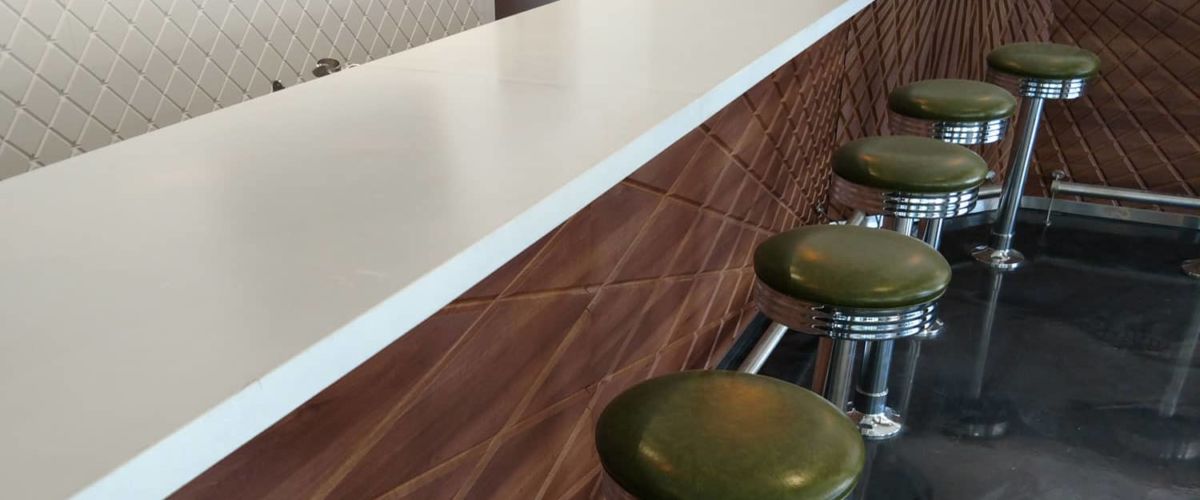
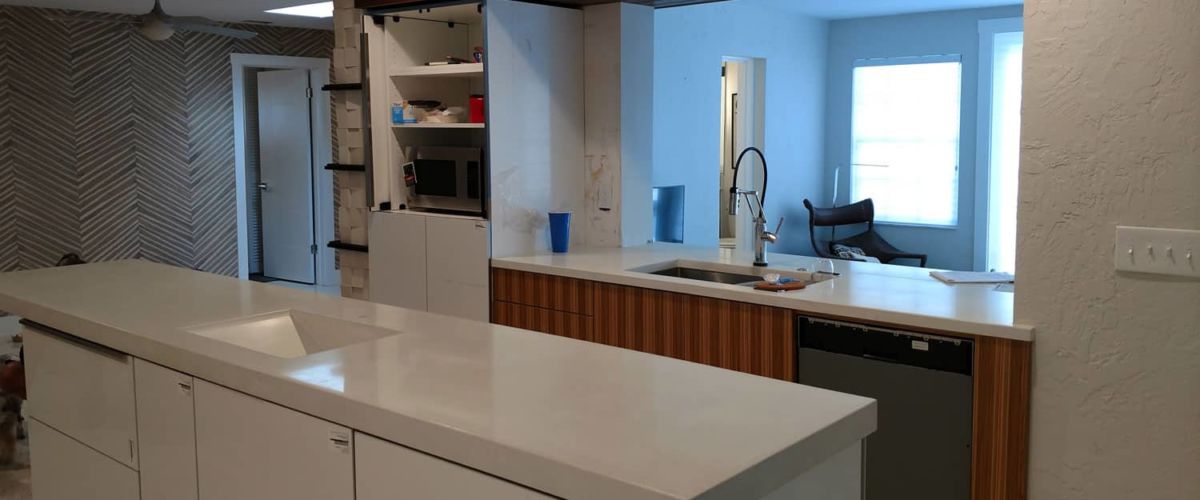
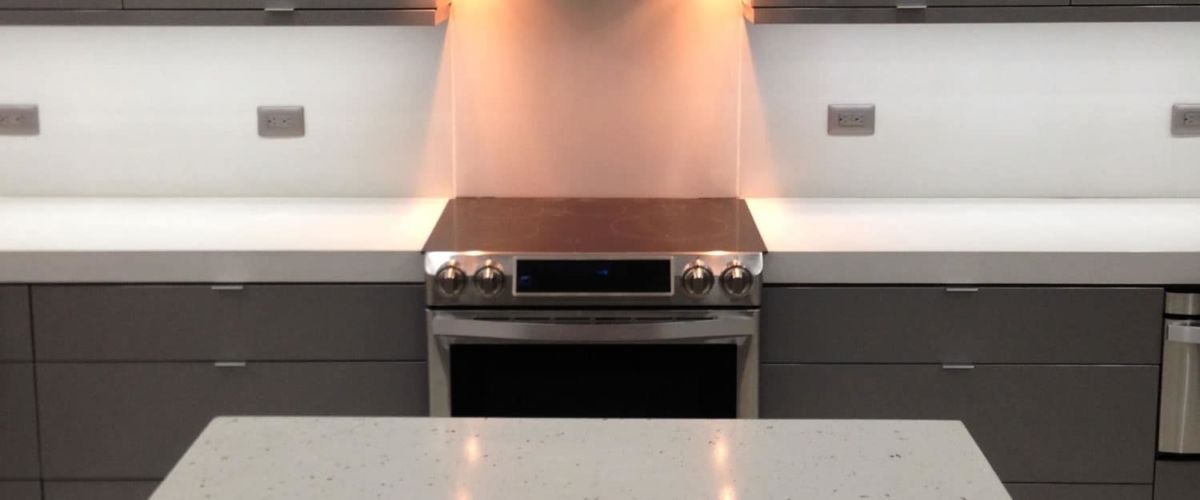
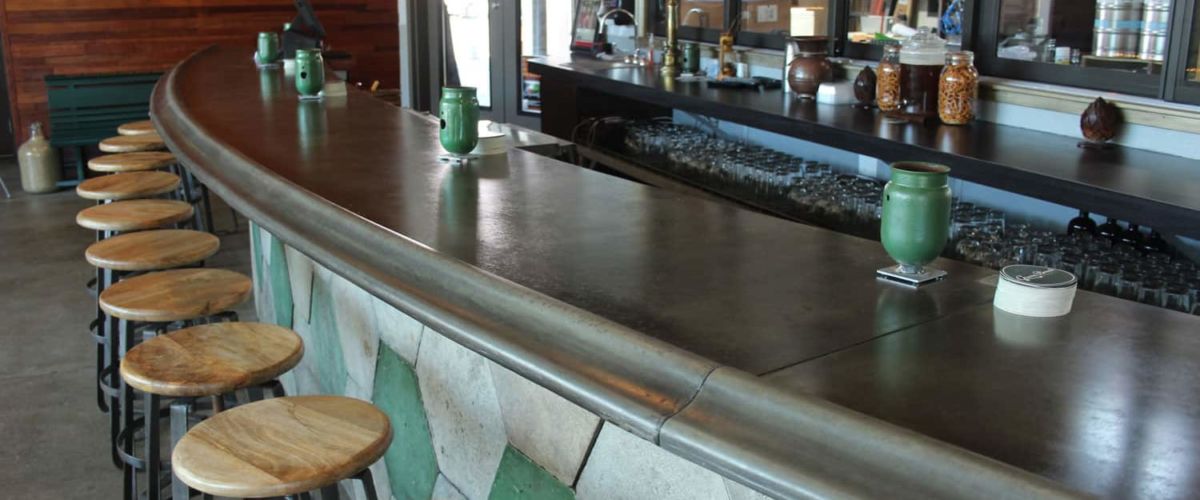
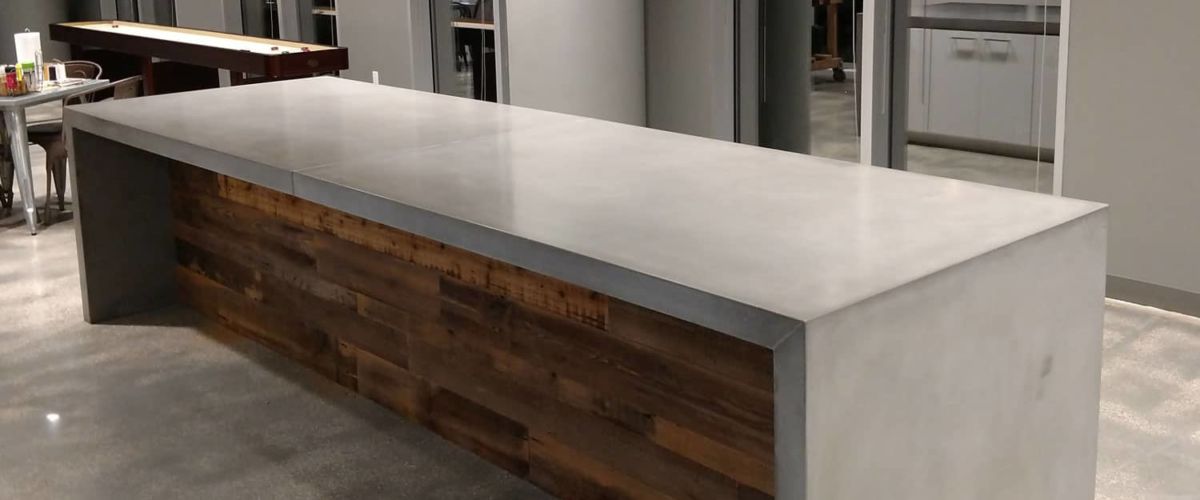
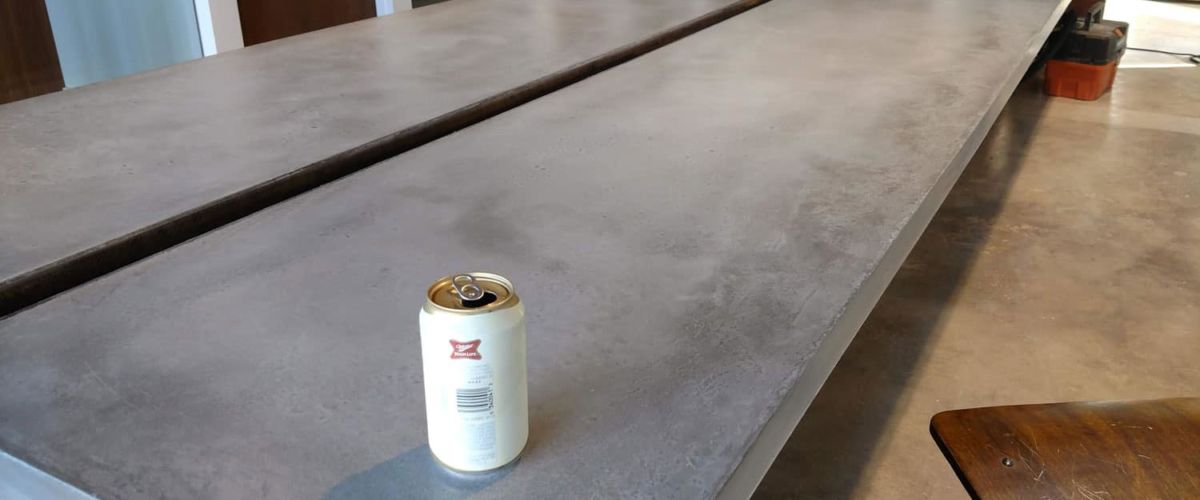
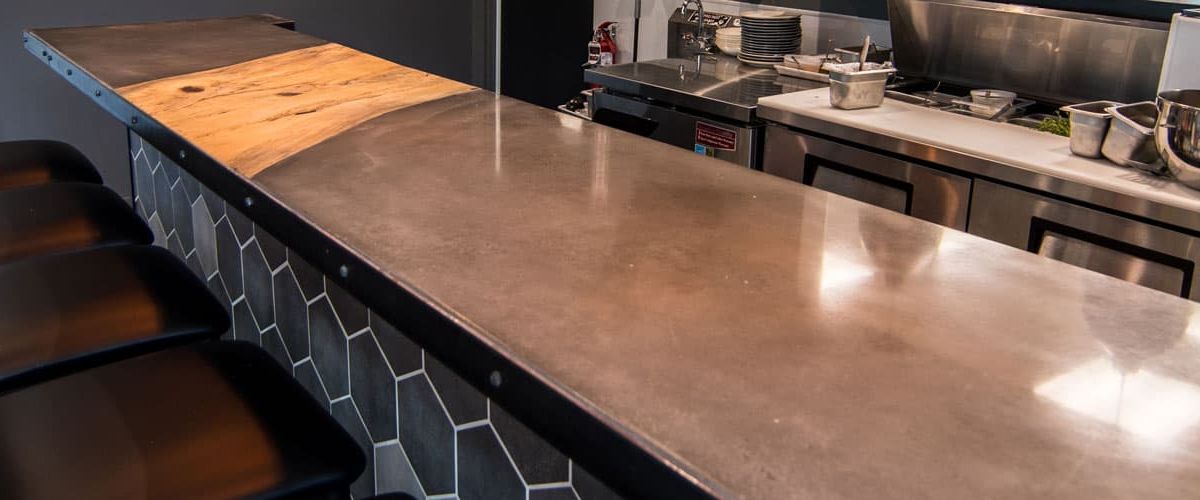
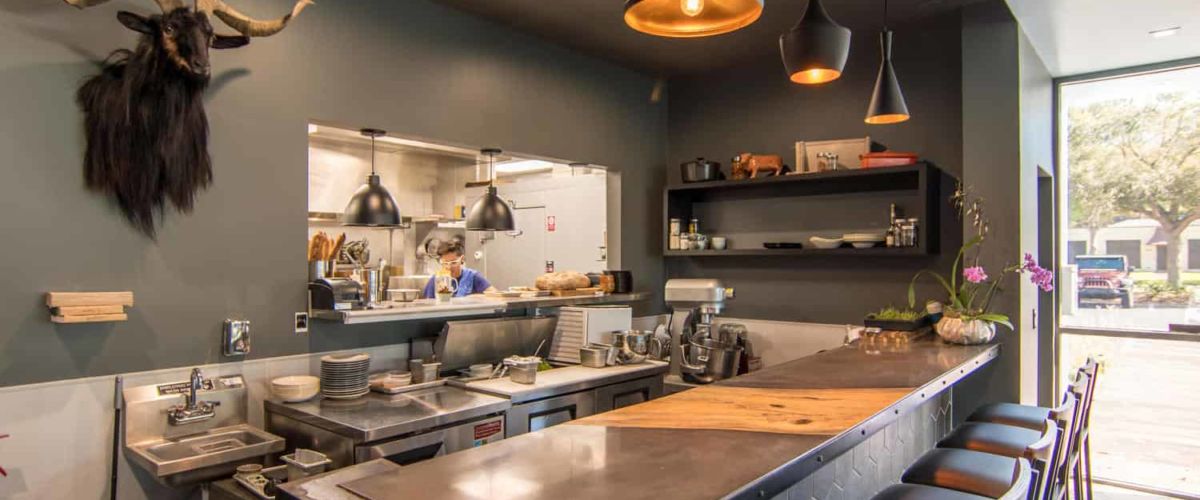
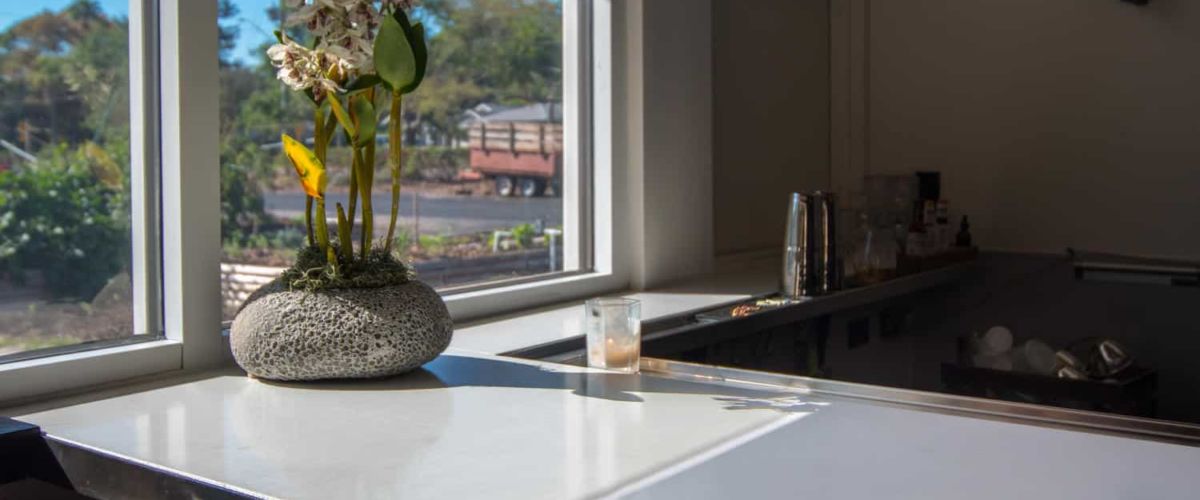
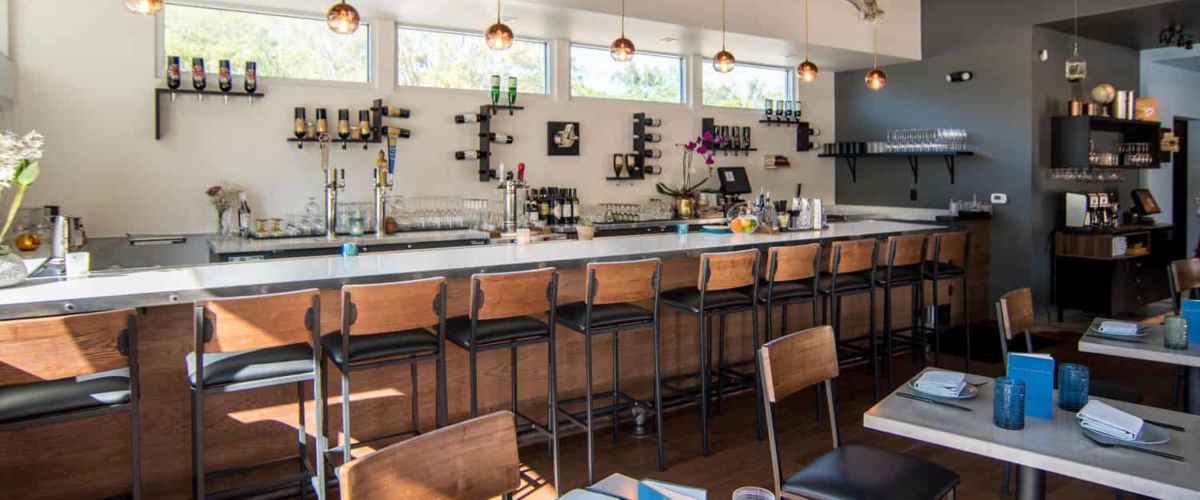
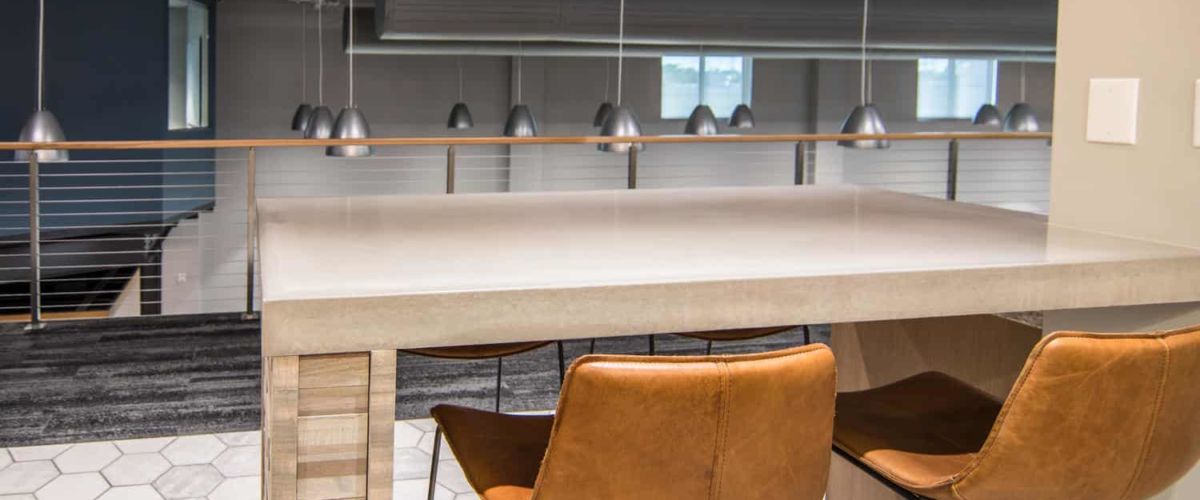
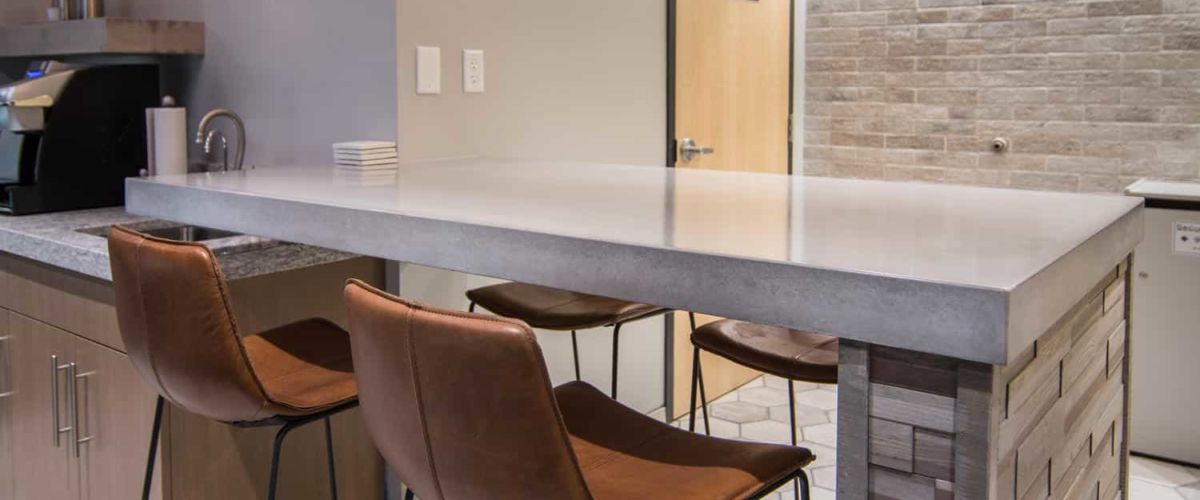
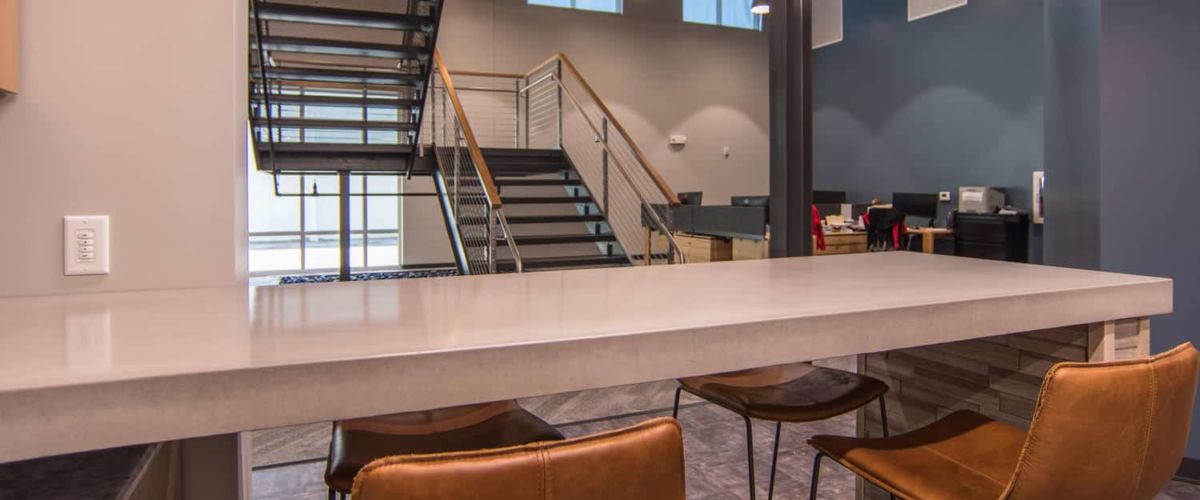

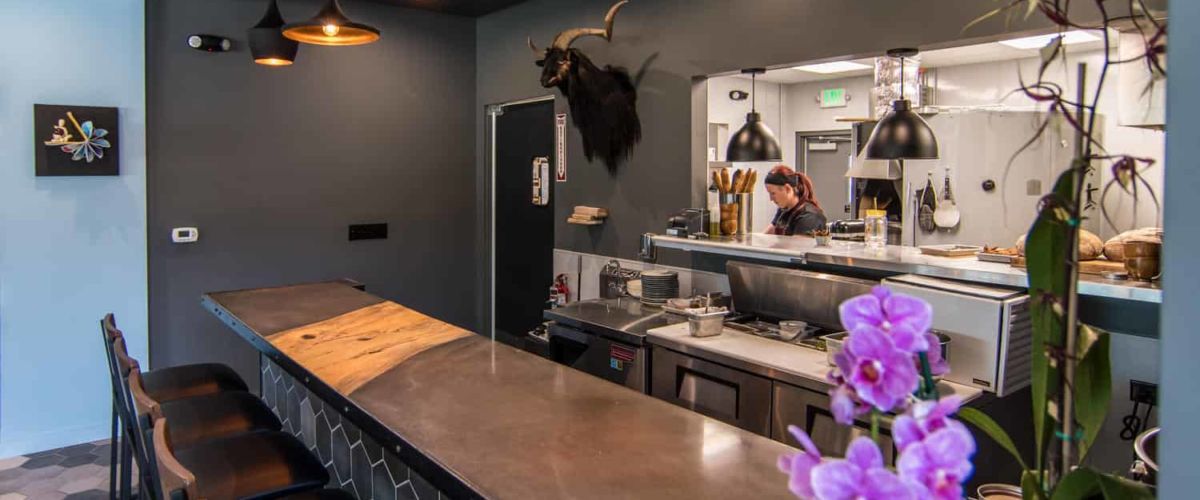
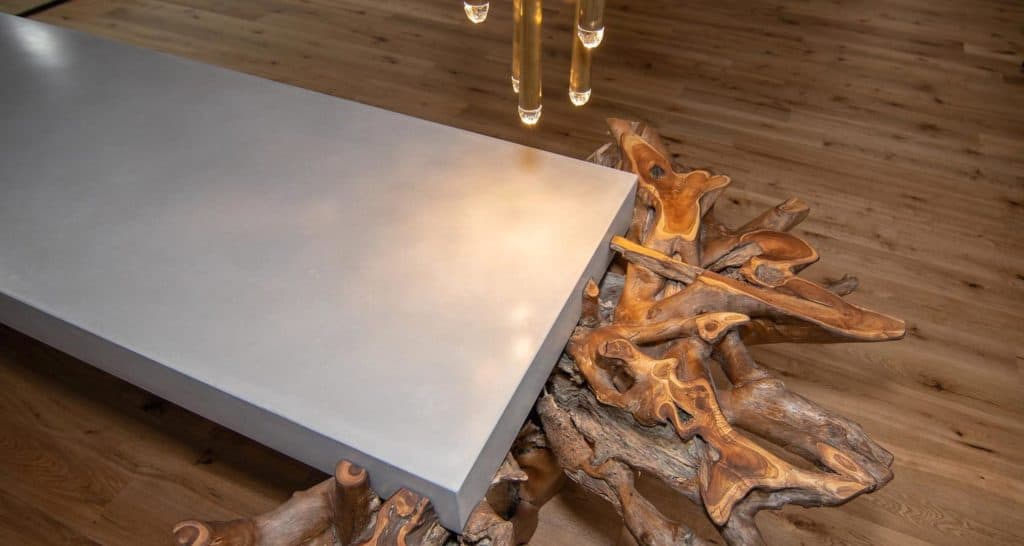
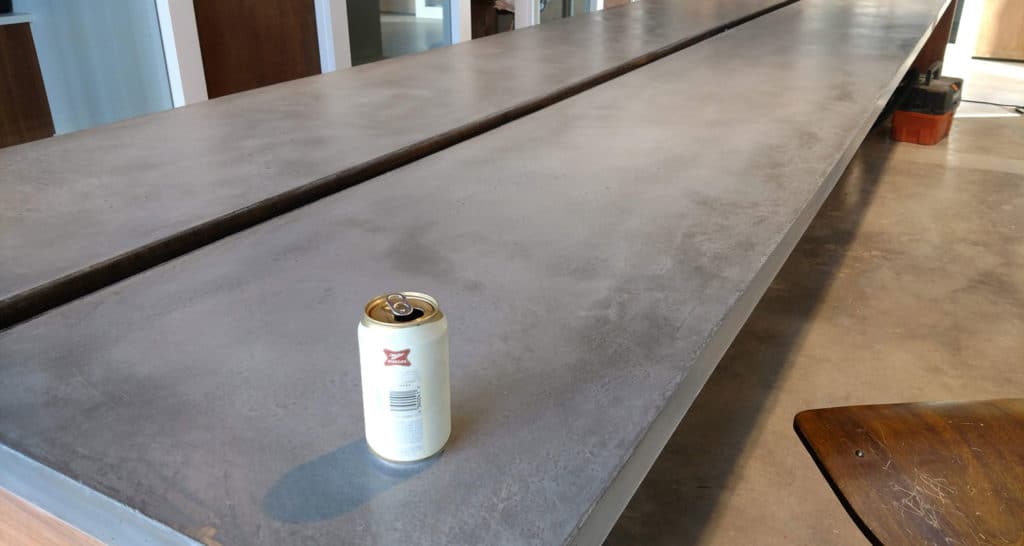
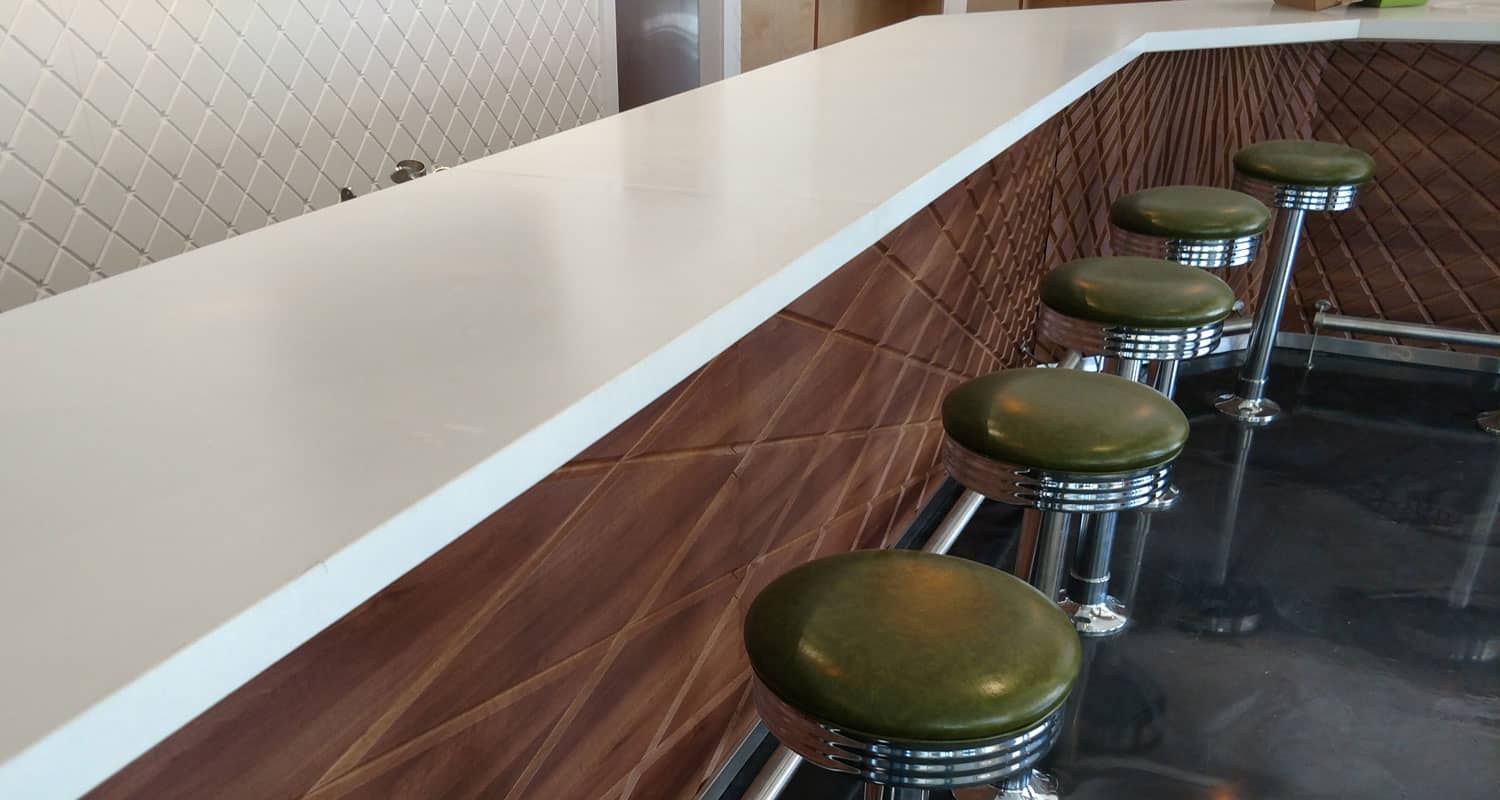
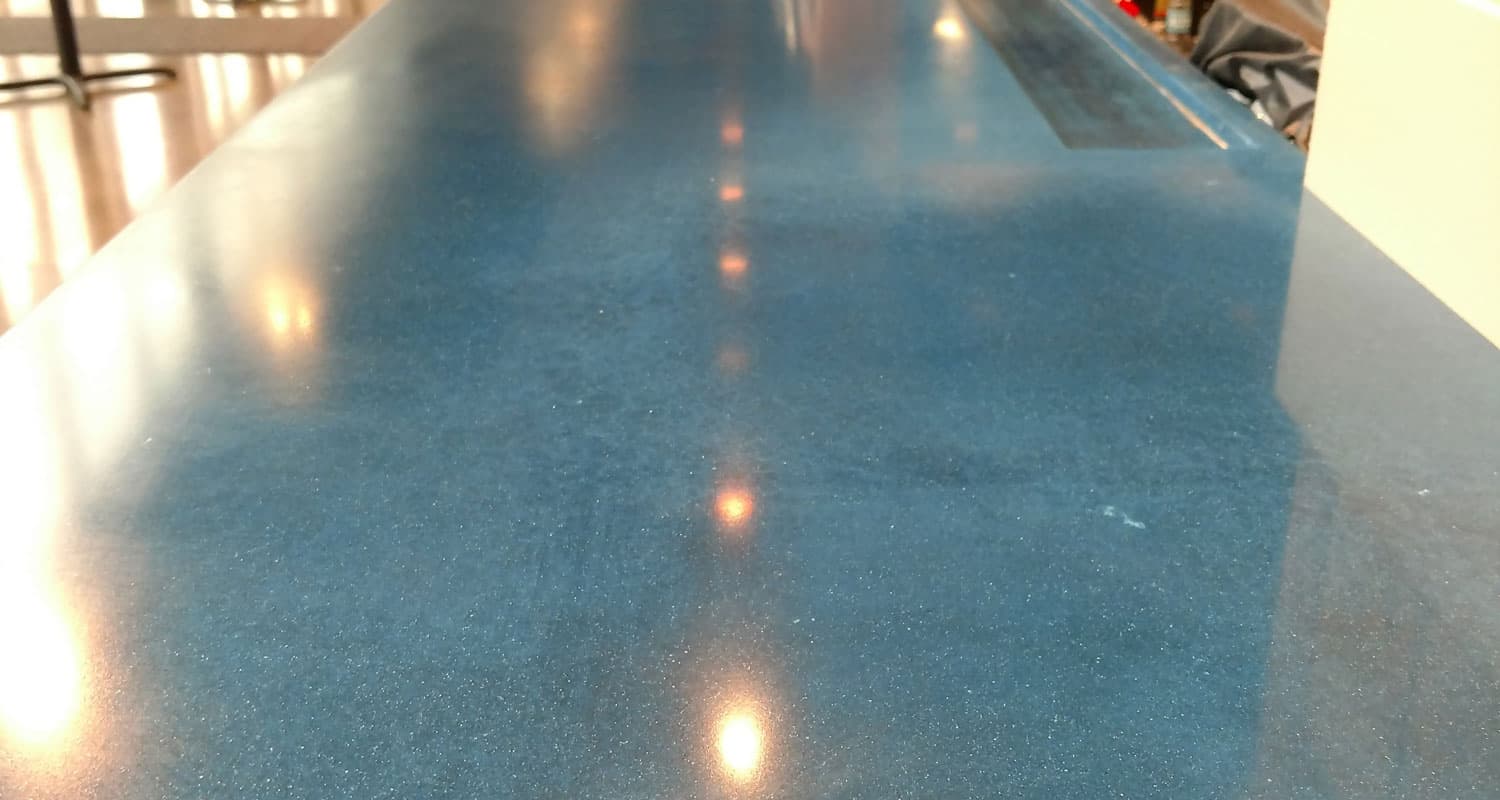
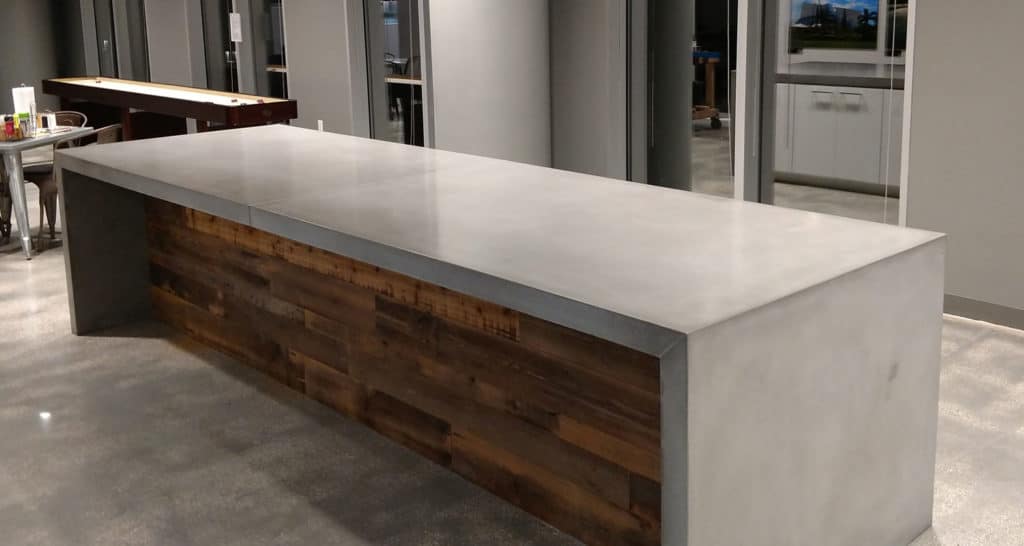
[…] Source – betonstudio.com […]